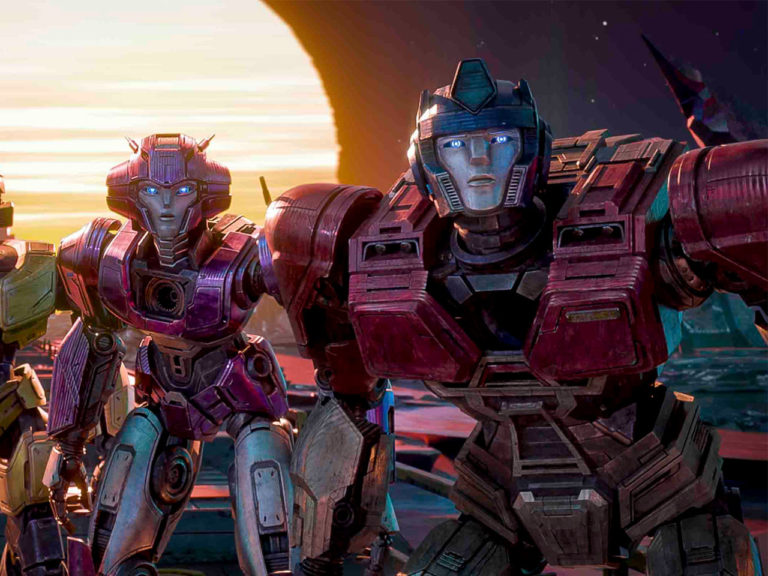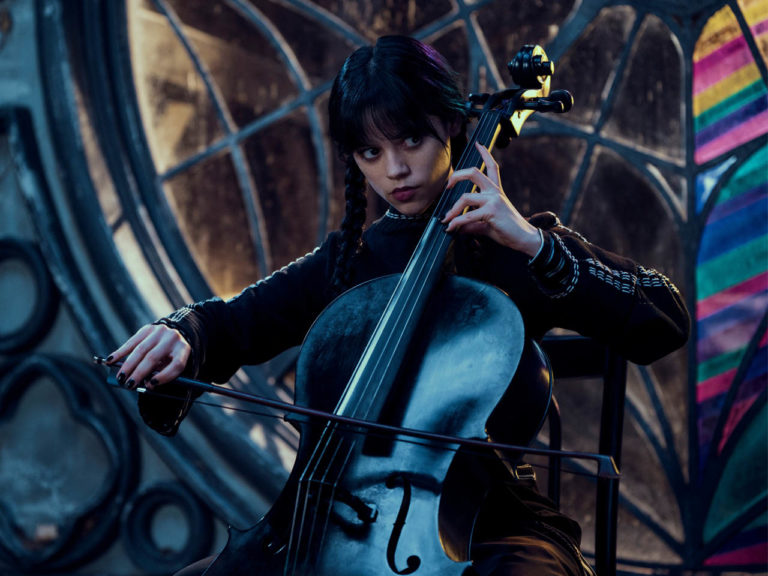

Last year, DC Comics released their New Talent Showcase, a collection of shorts to spotlight recent graduates of their writing and art programs. As a collection it was a mixed bag, but the intent was noble and allowed some fresh faces to flex their creative muscles. Honestly, I thought that the recent House of Horror one-shot was going to be this year’s spotlight on new talent, which… yeah, not exactly ideal.
Thankfully, DC have released another Showcase, focusing on a new batch of talent while letting them work a little more closely with their instructors. You know, guys like Klaus Janson, Scott Snyder, Andy Kubert. Maybe you’ve heard of them.
Besides focusing on a different group of writers and artists, this year’s special has a one-up on the previous installment thanks to the structure of each story: simply put, they’re actually complete. Last year’s stories read more like first acts or pitches to hopefully get picked up, resulting in tales that were unfinished at best, frustratingly incomprehensible at worst. Not so this time, though, as each story is plenty self-contained and has an identifiable arc.
And Batman characters. Sooooo many Batman characters.
Read on, chums, to find out how the rookies fared.

Tony Patrick already has a gig coming out of this, so this story is appropriate. It details a sparring session between Duke and Jason, and since Patrick will be writing the Batman and the Signal miniseries with Scott Snyder, this is a good chance to see what he’s made of.
The boys fight and train, using both their fists and their words to combat each other. There’s a lot of back and forth about daddy issues, entitlement, things like that. All pretty basic stuff that you’d come to expect in a short like this. There’s nothing bad, just a lot of routine statements and verbal jabs. It’s paced pretty well, though, and Patrick has a decent handle on the character’s voices, so I’m curious what he’ll do with The Signal.

Minkyu Jung, whose work I’ve enjoyed in Nightwing, does some solid if unremarkable work here. Some of his proportions are just a tad off, but it’s fun seeing a bunch of different members of the rogues gallery represented in the Mud Room simulation. Klaus Janson’s inks certainly help, as do Pete Pantazis’ bright, clean colors. This story was just a few shades above average, but that’s ok. I didn’t hate anything about it, and it kicks things off just fine.

Now this is a great one.
After a mission that could have gone horribly wrong, the Suicide Squad are extracted and en route to Belle Reve. Katana, who was gravely injured during a fight, heads back into the lion’s den. Her reason?
She lost her sword.
Tatsu has long been an incredible tragic figure, going all the way back to her first appearances in Batman and the Outsiders. Writer Aaron Gillespie (who was not the drummer for Underøath, it turns out) spins a good tale out of her near obsession with her blade, driving her to almost insane lengths to get it back. Sure, it contains the soul of her husband, and the themes of grief and absolution are well worth exploring. There’s no time for that here, though, so Gillespie instead just writes a solid, tight little story.
My biggest problem is with the portrayal of King Snake, whom Tatsu battles more than once for the possession of her sword. He’s a little too sarcastic and lax, and while it’s been a good two decades since I’ve read much of anything with him, that doesn’t seem quite in character with the master martial artist.
The pencils and colors from Lynne Yoshii and Beth Sotelo, respectively, are actually quite impressive. Yoshii’s layouts are particularly well though out, and figure work is top notch. This genuinely looks like it could be in a regular issue of Suicide Squad, that’s how great it is. The fights have great movement and energy, and the character models look stellar. The few narrative quibbles aside, I’d gladly read more from this creative team.

Now here’s an example of a story that is almost saved by the art, though just barely.
The idea here is solid: Count Vertigo is after his own brother Abelard, fearing that he will try to usurp the throne. Green Arrow sends Abelard and his family to Blüdhaven for protection, and Nightwing is on hand to escort them to safety. To do so, they need to make their way to the roof of a high-rise building, fighting Vertigo and his minions while in transit.
This should be a ton of fun, but man is the script just rough. There’s a lot of talk about family, and Nightwing is the perfect character to exemplify and explore that theme, but the dialogue is clunky and the inner monologuing is really heavy-handed. During the mission, Dick thinks about what each member of the family would tell him to do in a given situation, from Bruce giving terse orders to Barbara telling him to be smart to Damian being a little turd. It never quite works, particularly since the voices just seem off. They’re broad generalizations of each character, lacking any sort of actual personality.
As I said, the visuals are good enough to give it a gander, though they don’t entirely save the story itself. Siya Oum uses some really creative layout choices, evident from the very first page: it’s effectively a double-splash page image displayed vertically on a single page, giving an appropriate sense of vertigo and disorientation. Her panel placement is particularly creative, stacked and staggered to emulate a rough trek up a long flight of stairs. Her character models are pretty solid, too, slightly exaggerated while still bearing a good resemblance to their accepted designs. Oum and colorist Cris Peter make this story worth looking at for sure, but the clunky narrative keeps it from being anything more than average.

I’ll give credit where it’s due: this story is different.
Reports have gone around about a creature that has been abducting children. Poison Ivy appears on the scene to enact some retribution, but not for the human children. No, Ivy sees the creature as a threat to her children, and they must be avenged.
The creature is known as Nahemah, better known as the demonic Na’amah. Traditionally found in Jewish mysticism, Nahemah partners with Lillith and causes epilepsy in children. Here, it’s simply a creepy looking monster that’s choking the life from foliage. Hence, Ivy is upset, and wants to put an end to it.
Like I said, it’s different and very weird. There’s really not much to the writing, as it’s mostly internal monologuing and narration from Ivy. From a visual standpoint, it’s not really bad, though it veers into cheesecake too often. I kind of like the leafy cloak that Ivy wears, but her traditional “plant bustier” is pretty exaggerated here. Factor in some really impractical heeled boots and this outfit is just too much. I get that Ivy is a sensual character, but there’s a point where it goes from “sexy” to “silly.” Really, I wish more artists would pick up the redesign Tula Lotay used in All-Star Batman: it looked like actual clothing, and made the character attractive without being overly sexual.
Besides that, though, Matt Merhoff does draw some lovely plant life. Aside from Ivy’s look (which, to be fair, is illustrated very well on a technical level), everything going on around her looks great, and is even stunning at points.

I’m also not a big fan of an Ivy who controls plant life, but even then I can’t deny how beautiful those buds look poking through the soil.
When it comes down to it, this is a story that is memorable for the wrong reasons, but even then nothing really sticks with you. The creepy atmosphere is undermined by the almost comically sexualized lead, to the point that what actually works isn’t enough to make the story worthwhile.

“Mercy” is effectively Deadshot’s origin with a few twists, and that’s ok. This is a solid, tragic entry in the collection that details Floyd Lawton’s history while he carries out a mission from Amanda Waller.
I’m familiar enough with Lawton that I know what makes him tick, but I’d forgotten the one thing that actually drove him to “never miss a shot”: accidentally killing his brother. Growing up in an abusive household, Floyd eventually got the courage to kill his father, but instead of hitting him he shoots his brother Eddie. That twist makes him more sympathetic than a man driven by hubris and arrogance, as he wants to hit his mark as a sort of recompense.
Cut to the present, where Floyd is sent to assassinate a scientist who is threatening to sell some experimental tech to the Russians. In the course of his mission, however, Lawton discovers that Eddie isn’t dead, but instead part of a sick experiment being put on by the target Dr. Bryenko. It is a bit convenient, and some of the “virtual reality” technology the baddies are using is beyond silly, but it leads to a gut punch of an ending. I’d be lying if I said I wasn’t shocked and even a little moved.
Like Lynne Yoshii’s pencils in “To the Hilt,” Lalit Sharma’s style is refined enough that I could see this working in a Suicide Squad annual. It isn’t always favored by Jagdish Kumar’s occasionally heavy inking, but his figures are great and he does some interesting wok with perspectives.

This is just weird, and I can’t really say that I liked it much. Doctor Fate has been using magic too much, it seems, so he’s starting to turn into the type of monster he typically fights. At least, I think that’s what’s supposed to be going on here. I can see what Accampo is going for here (Fate must cast off his personal identity for the greater good, sacrificing himself so the power of Nabu doesn’t fall into the wrong hands). It’s a “the needs of the many outweigh the needs of the few” situation, but this… is just too weird. I don’t know.
Sam Lotfi’s style is pretty broad and light, which is a strange fit for this story. I certainly appreciate how some of his more exaggerated character models reacting to the horrors around them emphasize the dichotomy between the visuals and the thematic material of the story. It’s interesting, to be sure, I just couldn’t get into it.
I did, however, love Dezi Sienty’s lettering choices. The variations in word balloons fit the story well: Fate has the characteristic white balloon with a bold yellow outline; the narrative boxes look as if they were pulled from a journal; and mythical creatures like Nabu have bumpier balloons with a unique lettering font. The story didn’t do much for me, but the visual choices certainly made an impact.

Not surprisingly, this story is probably the most polished of the group. Written by Scott Snyder and illustrated by Ibrahim Moustafa, “The Archive” is both a Wonder Woman story and a creepy monster story.
Diana and Steve Trevor are in the archives below the Smithsonian Institute, rummaging through an armory of mystical weapons and items that the United States government has confiscated. Diana is taken in by all the strange wonders that she sees, more that the government has them to begin with than anything else.
Meanwhile, there has been an incident in a war room above.

Creepy.
There’s not an awful lot of action here, which is a little disappointing given the contents of the story: giant monster on the surface with Diana in an armory of mystical weapons. That’s awesome.
It’s ultimately more a study of Diana’s inquisitive nature, though, always seeking the truth and never accepting situations at face value. Steve says that she’s being tasked with burying and destroying the entire armory, while she would much rather find out the intent and purpose of each item. It’s a very Wonder Woman thing to do, and it left me wanting more in the best way.
Ibrahim Moustafa works off Snyder’s script pretty well, drawing a pretty great Wonder Woman. He throws in some pretty disturbing imagery, though some of his panels fall a little flat. Still, his Diana has that balance of innocence and strength that she needs, culminating in an exciting final page sequence that showcases her bravery. I have a feeling this pretty much came about because Snyder said “hey, I want to write a Wonder Woman story,” and I’m glad that he did.
Recommended if:
- You like short story collections.
- You want to give some new talent a fair shake.
Overall: Much more complete than last year’s edition, the New Talent Showcase brings together some promising individuals to tell some intriguing short stories. Not every installment works, to be fair, but there are some real gems here. At $7.99 it is pricey, but with contributions and assists from industry veterans like Klaus Janson and Scott Snyder, it’s good to see the confidence DC is putting in this group.
SCORE: 7.5/10
New Talent Showcase 2017 #1 will be available through comic shops and other retailers on Wednesday, November 29.


